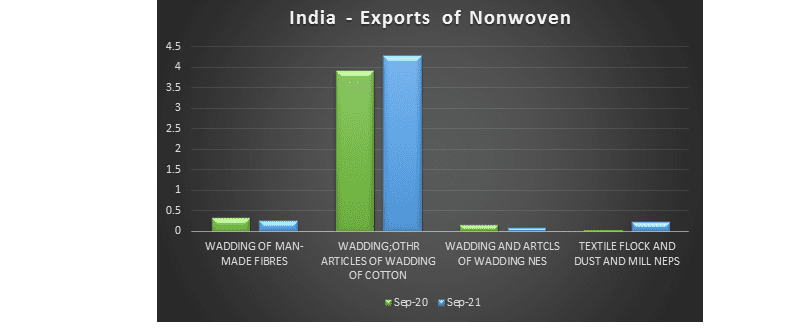Over the past decade, the global nonwoven industry has increased at a steady rate of 7.5 percent each year in tonnage. Though development in the nonwoven industry in the USA, Europe, and Japan has reduced with age, these countries continue to develop at a rate of 5 percent per year. The increased demand for such fibers as emerging markets like Asia expands accounts for a large share of global nonwoven growth. The major contributors to this expansion are India and China.
Nonwovens and technical textiles are the most potent and active areas of the textile industry; therefore, production and usage will rise in the coming years.
In India, the nonwovens sector is booming. Nonwovens have been manufactured in India for ages, although they were primarily confined to nonwovens made with staple fibers using traditional and outdated technologies. In addition, as the trend for lower basis weight continues, spunmelt and spunlace materials have become increasingly important.
Nowadays, most of the nonwoven’s volume is used in low-end, cheap items including shopping bags, backings, and rugs among other things. However, if high-end applications like filtration, automotive, geotextiles, and the sanitation and healthcare industries demonstrate constant development, the value of the development will climb as well.
Nonwoven Exports of India
India exported wadding of man-made fibers worth US$0.34 million in September 2020 which declined to US$0.27 million. Between January to September 2021, the total exports were worth US$2 million. In September 2020, adding; other articles of wadding of cotton exports were worth US$3.92 million, rising to US$4.28 million in September 2021. By September 2020, the exports were totaled US$34.84 million which decreased to US$31.49 million. Wadding and articles of wadding nes exports in September 2021 witnessed a fall, from US$0.16 million to US$0.1 million. At the end of September 2021, the exports rose by US$0.06 million to US$0.83 million. Exports of the textile flock and dust and mill neps by the end of September 2021 increased to US$1.61 million, up by US$1.48 million from the previous year.
India exported felt, impregnated, coated, covered, or laminated worth US$0.23 million in September 2020 which had a fall in September 2021. From January to September 2020 the exports were US$0.73 million decreasing to US$0.71 million in the corresponding period of next year. Needle loom felt and stitch-bonded fiber fabrics exports soared to US$0.49 million in September 2021 from US$0.19 million in September 2020. Between January and September 2020, the exports were worth US$2.4 million which doubled in the next year. Felt of other textile materials exports declined from US$0.27 million in September 2020 to US$0.15 million in September 2021.
Exports of man-made filament weighting>25g /sqm which were about US$54.53 million by the end of September 2020, climbed up to US$101.11 million in the same time span of 2021. India supplied man-made filament weighing between 70g/sqm and 150g/sqm worth US$21.81 million by September 2020, which increased to US$36.3 million. Exports of rubber thread and cord, textile covered remained the same in September of both years.
Between January and September 2021, India’s exports of another cordage, etc of polyethylene/polypropylene were around US$82 million, up by US$28 million from last year. Another twine, cordage, rope, and cables exports decreased from US$2.2 million in September 2020 to US$1.23 million in September 2021. India’s exports of made-up fishing nets of man-made textile materials by the end of September 2021 declined to US$47.67 million. India exported articles of yarn strap/the like of heading o. 5404/5405 twine cordage-rope/cables n.e.s. were worth US$1.21 million in September 2020 which increased to US$1.5 million in the next year.
AUTHOR: SOMASREE ROY

